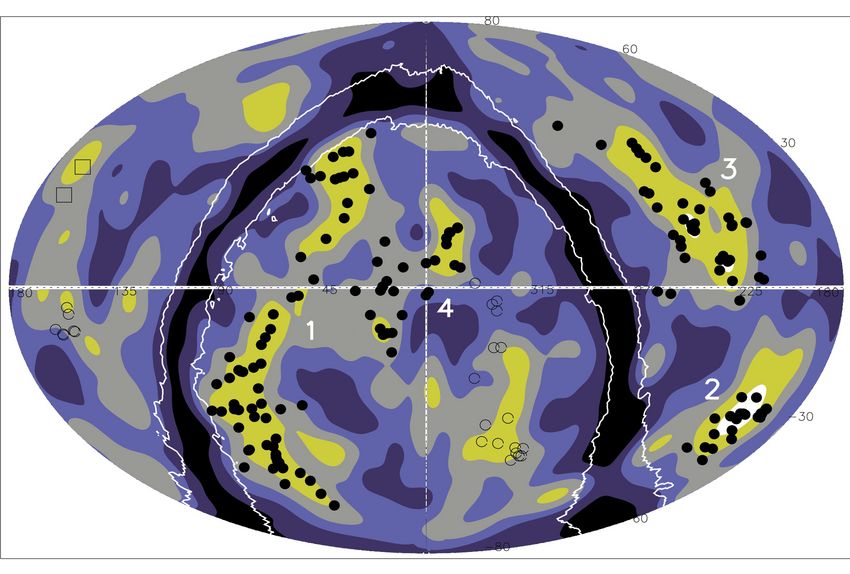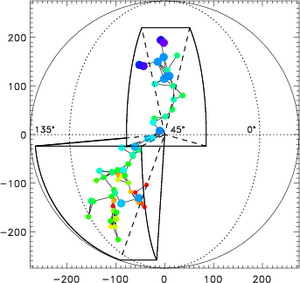Averaged over very large volumes, the Universe appears almost homogeneous. On scales smaller than about a billion light years and in our cosmic neighbourhood, it is characterised by condensations of matter in superclusters and by voids. Precise knowledge of these structures is very important for cosmological research and the main motivation for mapping the nearby Universe.
“If you look at the distribution of the galaxy clusters in the sky in a spherical shell with a distance of 416 to 826 million light years, you immediately notice a huge structure that stretches from high northern latitudes to almost the southern end of the sky,” explains Hans Böhringer, the project leader. It consists of 68 clusters of galaxies and has an estimated total mass of 2.4 1017 solar masses with a length of around 1.4 billion light years. This breaks the size record of all reliably measured cosmic structures. The largest of them so far, the “Sloan Great Wall”, for example, has a length of around 1.1 billion light years and it is located much further away.

